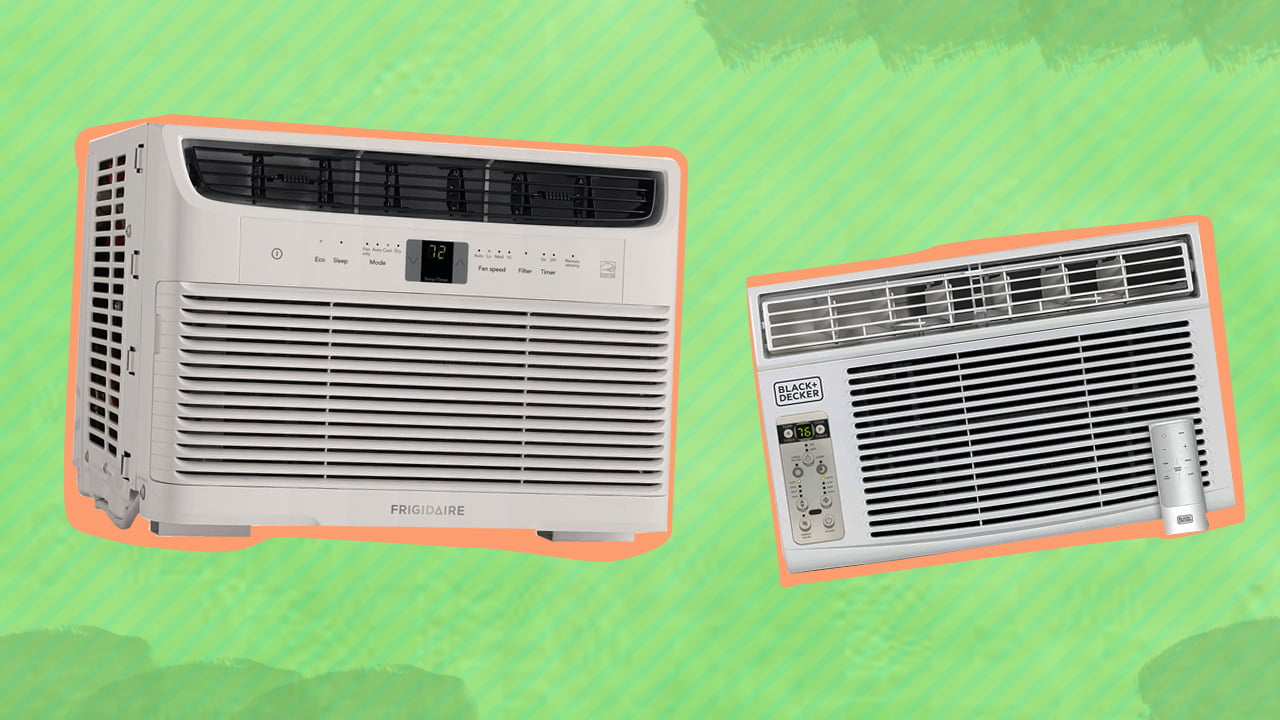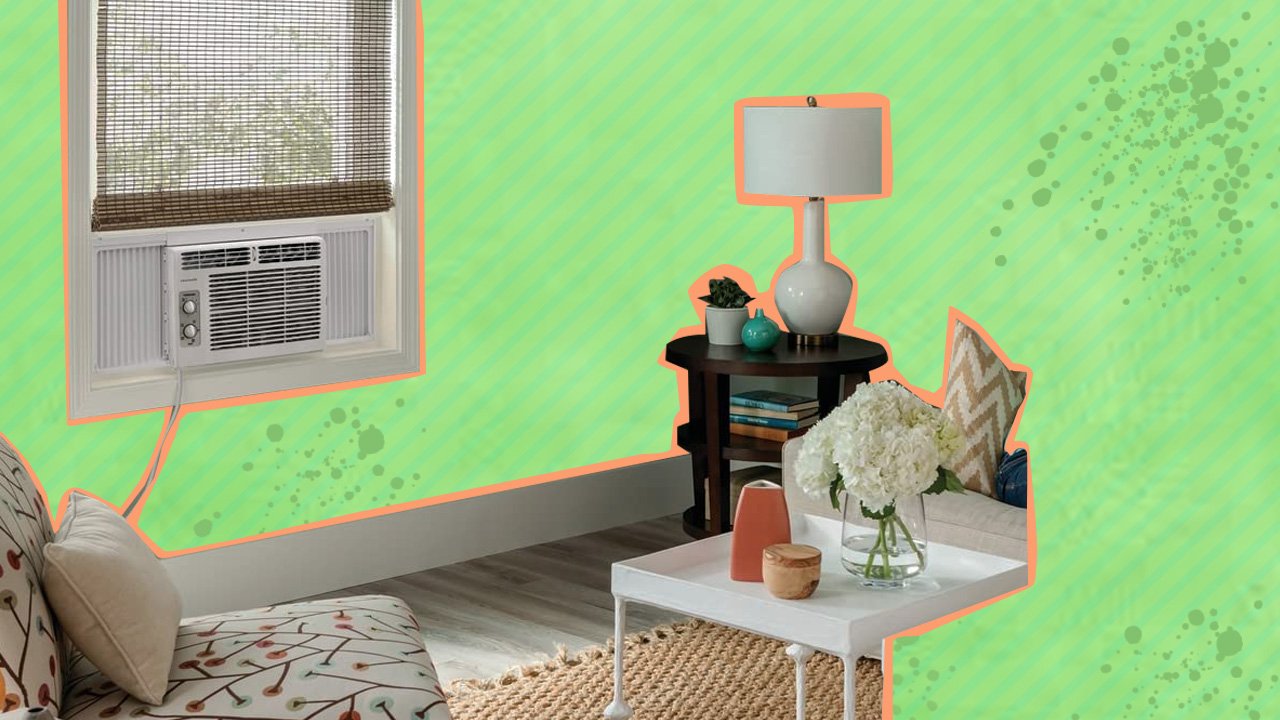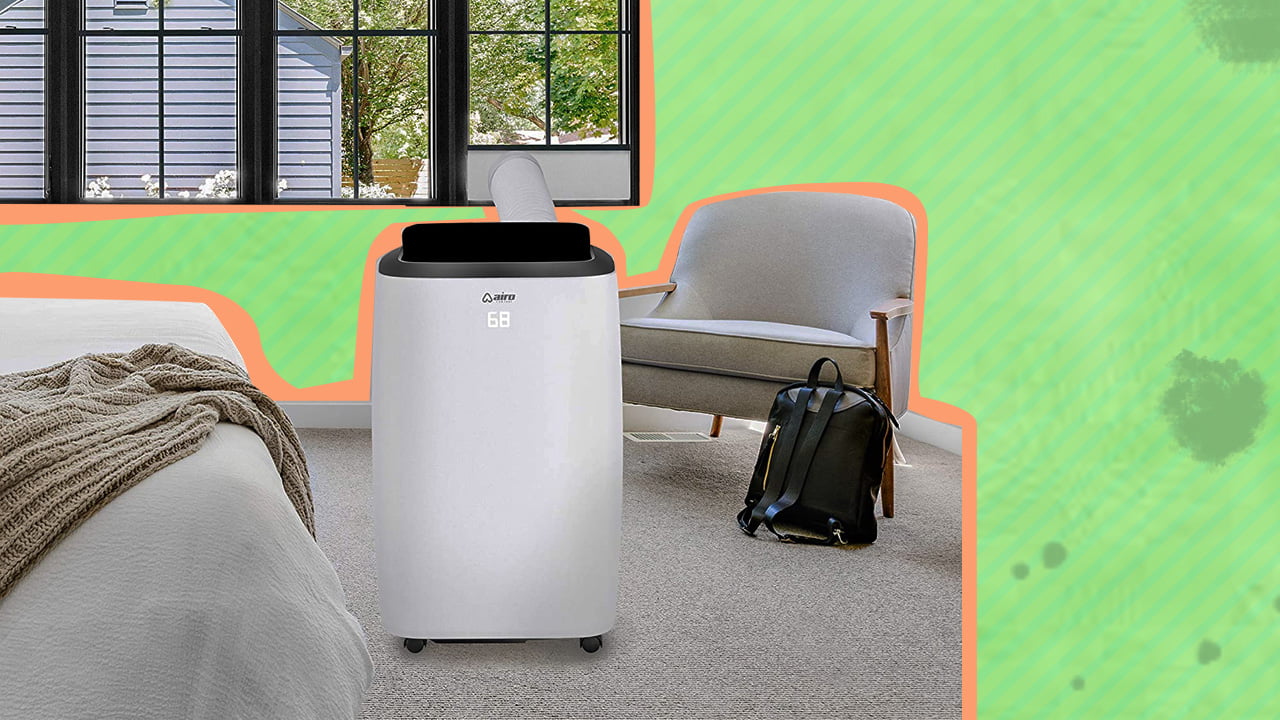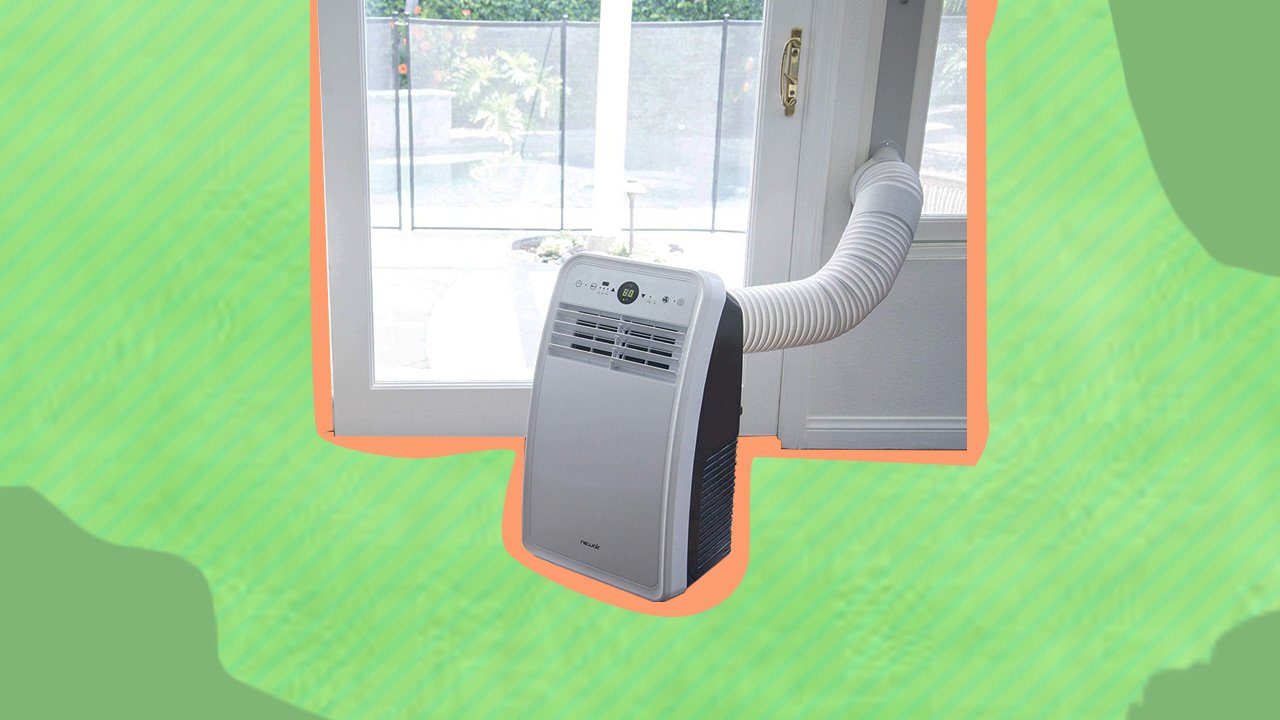A window air conditioner is more energy efficient, affordable, lasts longer, and has a larger cooling capacity but has higher voltage requirements. On the other hand, a portable AC unit is easier to install and can be installed on standard electric circuits.

With summer fast approaching, you may be planning to get a new air conditioner installed at home.
But when it comes to selecting an air conditioning unit, many people are confused about whether to go with a window unit or a portable one. If you’re having the same problem, you’ve come to the right place.
This guide explains the advantages and drawbacks of both types of AC units so you can select the right one.
Window Air Conditioners

Window air conditioners are installed in windows for cooling homes and offices for cooling. A window air conditioner draws air from outside through the window, which then cools and circulates inside, cooling the interior space. At the same time, it draws the humidity and hot air from inside the room and sends them outside.
When installing a window air conditioner, you first need to measure the window where it is to be installed. This is because window air conditioners are available in several sizes, and selecting the right one will ensure it fits the window perfectly. These AC units are quite heavy, and their installation is not very easy.
The reason is that the major portion of the AC unit remains outside the window where it is installed.
Advantages Of Window Air Conditioners
While window AC units were introduced earlier than portable ones, they still offer certain benefits that make them a good option. These include:
1. Reduced Clutter
Since the major part of a window AC unit remains outside the window, such units are great for people who want to reduce clutter. They are well-suited for smaller rooms that do not have much space while still possessing excellent cooling capabilities.
2. More Energy Efficient
The energy efficiency of air conditioners is measured using the Energy Efficiency Ratio (EER) or Combined Energy Efficiency Ratio (CEER) ratings. If these ratings are higher, the air conditioner has a lower running cost and is a better option. Compared to portable air conditioners, window units are more energy efficient.
Generally, window air conditioning units have an EER rating of 10, while portable ones have an EER rating of 8.5. In fact, some window AC units may even have an EER rating of 12 or higher. And a more efficient air conditioner can help you save a lot on power bills.
3. Lower Noise Levels
Unlike split air conditioners, window AC units come with an air compressor, which is the component that tends to make the most noise within the room. In mini-split air conditioners, the compressor is located in the outdoor unit, leading to lower noise levels, which are measured in decibels (dB).
The noise levels also depend on the fan speed of your AC unit, with higher speeds leading to more noise. That being said, when comparing window air conditioners with portable ones, the former has lower noise levels measured in decibels (dB), though the difference is slight.
For instance, when a window air conditioner works at 100% of its capacity, the noise levels range from 53 to 58 dB, though some window units operate below 50 dB. In contrast, when portable air conditioners function at full capacity, the noise levels can vary from 55 to 60 dB.
4. Better Room Coverage And Cooling Capacity
British Thermal Unit required per hour or BTU/hour is the unit used to measure the cooling capacity of air conditioners. Ideally, 20 BTU per square foot is required to lower the temperature for proper cooling, and as should be obvious, larger rooms require units with higher BTUs. That is why the capacity of all types of air conditioners is closely related to room coverage.
And the range of window air conditioners tends to be much larger than portable ones. Such units can have an output ranging from 5,000 BTUs to 25,000 BTUs and can be used for cooling spaces as large as 1,250 square feet.
In comparison, the output of portable AC units ranges from 8,000 to 14,000 BTUs and can be used for cooling spaces as large as 700 square feet.
5. Longer Lifespan
One of the most significant differences between window room air conditioners and portable ones is their lifespan. A window air conditioner can last for as long as ten to 15 years, while a portable air conditioner lasts only for five to ten years. So, a window unit is much more durable and does not need replacing as quickly.
6. No Additional Venting is Needed
All air conditioners have venting requirements to ensure they can replace the hot air inside with cold air. Since the bulk of a window air conditioner remains outside the window, it is properly vented and has no additional venting requirements.
Air can enter, pass through the air conditioner, and go outside from the back. But with portable air conditioners, this is not possible, and they need a hose for proper venting. You can get a single-hose or dual-hose air conditioner that removes the hot air from the room. This will need installing a hose through the window from where the warm air can go out.
Venting is also required to allow the air that condenses on the evaporator and condenser coils to go out as water after it changes from gas to liquid form. But it can be quite problematic when you do not have a window. While there are several venting options for portable air conditioners, they are not very easy to utilize.
7. More Affordable
Despite having a larger cooling capacity and greater durability, a window air conditioner is much more affordable than a portable one. They usually cost between $180 and $700, while a portable air conditioner costs between $300 and $800. In both cases, larger units will cost more.
Ultimately, a window AC unit will offer better cooling than a portable one for any given price because it has more BTUs.
Drawbacks Of Window Air Conditioners
Now, I’ll be sharing why a window air conditioner may not be a better option than a portable one.
1. More Difficult To Install
When it comes to installation, it is possible to install a window air conditioner by yourself, but it is highly recommended to hire the services of an HVAC professional. Installing a window air conditioner is not as easy as a portable air conditioner since you need to set it on a window sill.
And a portable unit does not require a window kit to seal the space around it.
2. Higher Voltage Requirements
The standard voltage circuits present in homes are 110V or 120V, and most homes do not have 220V or 240V circuits. A portable air conditioner works well on standard circuits, and you do not need to upgrade them to install such AC units.
However, most window units will only work on a 220V or 240V circuit, so upgrades become necessary for such installations. Another way to look at this is by considering the BTU of the window and portable air conditioners.
An air conditioner with a maximum cooling capacity of 15,000 BTU can work on 110V or 120V circuits. Such circuits use 10-amp or 20-amp circuit breakers. But a window unit generally has a higher cooling capacity and will work only on 220V or 240V lines.
3. Takes Up Window Space
I mentioned above that the larger part of a window air conditioner stays outside, which helps reduce the clutter in the room. But there is another factor to consider. For installing a window unit, you need to have a large enough window where it can be set.
Also, a window unit will always reduce the amount of natural light entering the room since it blocks the window through which such light comes in. This is not a problem when getting a portable air conditioner since it is placed on the room floor instead of in a window. And it can be moved to another spot to free up space when required.
4. Lack Of Portability
A window air conditioner is meant to be installed in a window for cooling a specific area and cannot be moved to another location. In contrast, a portable AC unit, as the name indicates, is designed in such a manner that it can be moved from one room to another. Thus, cooling different areas of the house is easier with the latter.

Portable Air Conditioners
A portable air conditioner is a machine that can be installed in any spot inside your home. Unlike window air conditioners, these units remain inside the house instead of the larger part being outside. A portable AC unit has a window kit and an exhaust hose and needs to be connected to a power source.
Like a window unit, it takes air from the room where it is installed, cools it, and circulates it. The kit is used for sealing off the window of the room where the unit is to be installed, except for a small area through which the exhaust pipe passes. This provides space for moisture and heat to go outside of the room.
Costlier portable units have two hoses, one for pulling in air from outside and another for letting the warm air and moisture escape. Such air conditioners are best for people who do not wish to spend on multiple window units for cooling different house rooms.
Advantages Of Portable Air Conditioners
1. Easier To Install
Installing a portable air conditioner is much easier than a window AC unit and does not require you to hire a heating, ventilation, and air conditioning technician. To install such a unit, simply place it on the room floor and plug it into a 110V or 120V power outlet.
Then, place the hose of the portable unit so that it goes out of the window before using the provided kit to seal all other gaps in the window. Once the window has been sealed off, you can turn on the portable room air conditioner and let it cool the living space.
2. Lower Voltage Requirements
As I mentioned before, the standard electrical circuits present in most homes are 110V or 120V. This is enough for optimal functioning for a portable air conditioner since portable units do not require high voltage. So, you do not need to upgrade the circuits to install such units.
Air conditioners with a maximum cooling capacity of 15,000 BTU can easily run on 110V or 120V circuits.
3. Portable
The biggest advantage of a portable air conditioner over a window AC is its portability. You can place it in any room that needs to be cooled and shift it when required. This is a very useful feature for cooling multiple rooms without installing an air conditioner in each room.
And since you can just cool the room you want, it can be very helpful in reducing power bills.
Disadvantages Of Portable Air Conditioners
1. Not Very Efficient
When it comes to efficient energy use, portable units are not as good as window units since they have a lower EER rating. While window AC units generally have an EER rating of 10, portable ones have an EER rating of 8.5. Thus, they are likely to use more energy while providing less cooling.
2. Noisier
Compared to window AC units, a portable unit will produce more noise while running. It will produce about 55 to 60 dB of noise, whereas a window unit will produce 53 to 58 dB. So, while the noise levels are slightly higher, the difference is not huge.
3. Lower Room Coverage
Modern window air conditioners have a much larger range than portable units since they can produce as much as 25,000 BTU. So, while a portable unit may be suitable for smaller rooms, it may not be the best option for cooling larger ones.
4. Shorter Lifespan
Portable ACs have a shorter lifespan than window units and can last for a maximum period of ten years. On the other hand, window AC units can last for as long as 15 years or more.
5. Venting Requirements
Window AC units sit in a window and do not require additional venting, while portable units are placed inside the room and require proper ventilation. That is why they come with one or two hoses that have to be pushed out of the window. But in rooms that have no windows, installing a portable air conditioning unit can be quite tricky.
6. More Expensive
A portable AC is more expensive than window AC units, despite having a lower cooling capacity and a shorter lifespan. They can cost as much as $800, while the maximum cost of a window AC is $700.

Quick Comparison Between Window And Portable ACs
| Comparisons | Window ACs | Portable ACs |
|---|---|---|
| Energy Efficiency | 10 EER | 8.5 EER |
| Noise Levels | 53 to 58 dB | 55 to 60 dB |
| Room Coverage | 150 to 1250 sq. ft. | 200 to 700 sq. ft. |
| Cooling Capacity | 5000 to 25000 BTU | 8000 to 14000 BTU |
| Expected Lifespan | 10 to 15 years | 5 to 10 years |
| Installation Process | Not as easy | Easier |
| Voltage Requirements | 220V to 240V for more than 15000 BTU | Standard 110V or 120V circuit |
| Required Space | Needs a large window but not much room space | Requires room space |
| Venting | No extra venting requirements | Has additional venting requirements |
| Portability | Not portable | Portable |
| Cost | Relatively affordable | More expensive |
Which One To Choose?
A window air conditioner and a portable AC offer different advantages and drawbacks. Ultimately, which one you should go with depends on personal requirements. A portable AC is better for people who want an option that is easier to install and can be moved around.
Such units do not require upgrading the electric circuits like a window air conditioning unit. And they can help you cool several rooms without needing to install separate cooling units in each room.
On the other hand, a window air conditioning unit may be more suitable for those looking for a more affordable option that lasts longer and is more energy efficient. It is also a better option for houses with larger rooms.
You can also take the help of an HVAC professional who can recommend the right option for your home after making an inspection.
Tip
When choosing between a portable AC and a window unit, you should consider the existing air conditioning present in your home. Many homes have central air conditioning installed that warms and cools the entire house. Central heating and cooling do not need to be replaced and can be simply supplemented with the selected option.

Conclusion
A window and a portable air conditioner possess excellent cooling capabilities that make it easy to keep your home cool. And with the information I’ve provided in this guide, selecting the right option for better indoor air quality should be a bit easier now.
But if you are still confused, another alternative to consider is an evaporative cooler. Such coolers are affordable, use the latest technology to ensure efficiency, and can even be used in rented accommodations. They also do not make much noise and have a sleek design.
Whichever option you choose, consider the various factors and your personal requirements to ensure you have the best experience.
